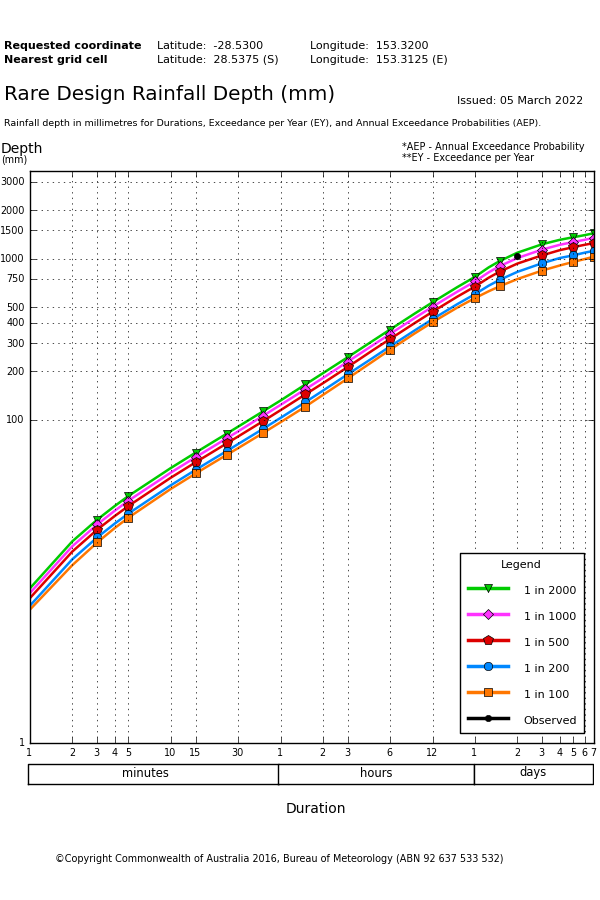What does a '1-in-1000 year' rainfall event actually mean?
There has been a lot of discussion in the past fortnight about how rare the rain and flooding from this event was for Qld and NSW.
We already know that a number of records were broken for both rainfall and flooding, including those listed here, here and here. These are individual site records, where rain amounts, or flood heights, are the highest in official records for that location.
We can also use historical records and the observed rainfall and river level data from this event to calculate how unlikely it was for this type of rainfall or flooding to occur statistically.
A common way to represent this event probability is to use the Annual Exceedance Probability (AEP), which simply refers to the likelihood a given rain amount or flood height will occur in any given year.
Looking at the 676.8 mm of rain that fell in Brisbane during the 72 hours ending at 9am on February 28, the probability of this three-day rain rate in any given year is between 0.5 and 0.2 percent. Put another way, this much rain is, statistically, only expected to occur once every 200-to-500 years. This is because if there is a 0.5 percent probability of a given rain rate occurring in a given year, you would expect it to occur in one out of every 200 years.
In northern NSW, Doon Doon’s 1040 mm during the 48 hours to 9am on March 1 was a rainfall rate that has a 0.1 to 0.05 percent chance of occurring in any given year. This makes it fall somewhere between a 1-in-1000 year and 1-in-2000 year rainfall rate for this site.

Image: Annual exceedance probabilities of various rainfall rates and durations at Doon Doon, NSW. The black dot represents the observed rate of 1040mm in 48 hours, which sits between the pink (1-in-1000) and green (1-in-2000) lines. Source: Bureau of Meteorology.
However, it is important to note that these estimated return intervals are not schedules, they are probabilities. A 1-in-1000 year rain rate is not a rain rate that occurs only once every 1000 years. It is, instead, a rain rate that has a 0.1% chance of occurring at that location in any given year.
It is possible to have 1-in-1000 year rain rates in two consecutive years. In some parts of the world, climate change is making extreme rain events more frequent and intense. So, what used to be a 1-in-1000 year event in a past climate may now be more like a 1-in-100 year in the modern climate, for some places.